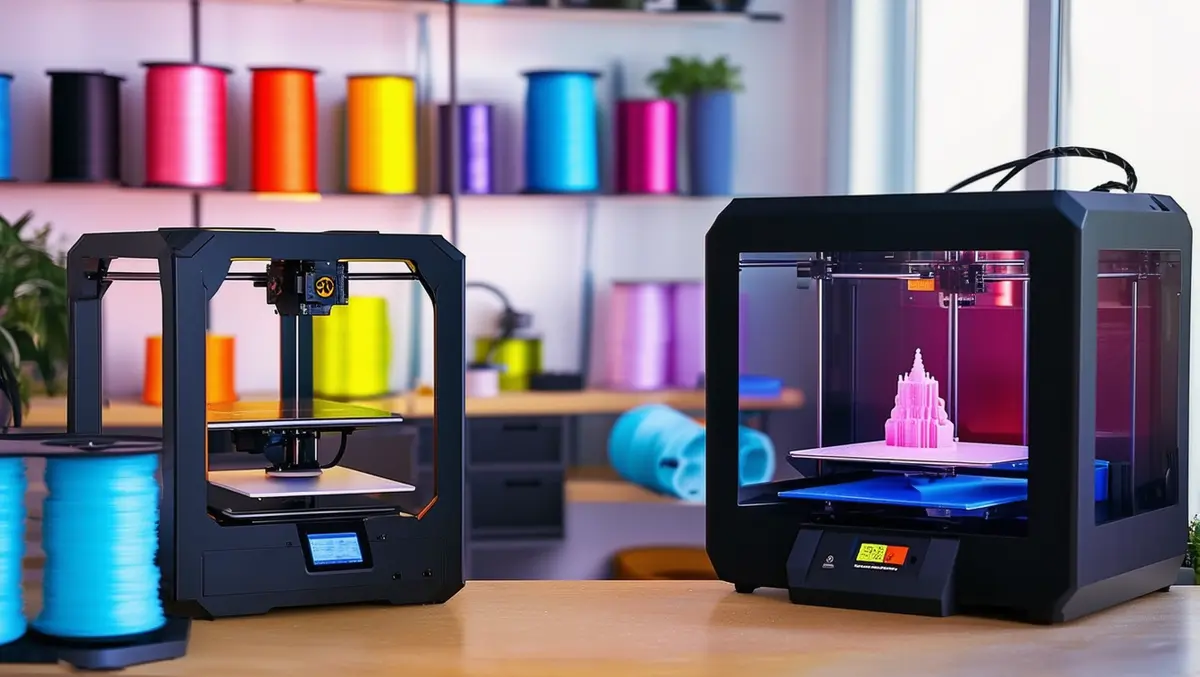
Surge in entry-level 3D printers as industrial stagnates
Global shipments of entry-level 3D printers have surged significantly in the second quarter of 2024, while industrial 3D printer shipments have experienced further stagnation.
According to the most recent data from CONTEXT, a global market intelligence firm, there has been a notable discrepancy between high-end and low-end hardware markets in 3D printing. Chris Connery, Vice President of Global Analysis at CONTEXT, commented, "The latest insights into global 3D printer system shipments highlight very different trends at the high-end and the low-ends of the hardware market. The slow-down in new equipment shipments in the all-important INDUSTRIAL segment has allowed companies which focus in that space – particularly Western companies - to take a step back to look at their own financial health with many then moving forward with long-coming consolidation. Conversely, the continued acceleration of the consumer-centric ENTRY-LEVEL has allowed companies which focus on this segment to thrive in the moment."
The industrial sector has been particularly weak in certain areas, with polymer vat photopolymerization systems seeing a significant drop in demand. Metal systems are performing slightly better, especially in China, where domestic shipments of metal powder bed fusion (PBF) systems have risen by 7% from the previous year.
Key findings for the second quarter of 2024 include a 25% year-on-year decrease in industrial segment shipments. This marks the fourth consecutive quarter of decline in this category. In contrast, entry-level 3D printers experienced a 65% increase in shipments, reflecting 'explosive growth' within this segment.
Revenue trends in the 3D printer market indicate that global revenues rose by 7% year-on-year in the second quarter of 2024. This growth was solely propelled by the entry-level segment, with a 58% increase in revenue compared to the same quarter in the previous year. In comparison, revenues in the industrial sector fell by 17% and by 21% in the professional segment. Entry-level printers have become dominant in global system revenues, accounting for 48% compared to 38% from industrial systems.
The industrial sector, particularly those priced over USD $100,000, saw a sharp decline, with total shipments down 36% from the previous year. The polymer vat photopolymerization market was particularly affected, with a 47% drop in shipments, significantly impacting industry leader UnionTech and several Western original equipment manufacturers (OEMs).
The industrial metal sector saw a 7% year-on-year decline in shipments; however, on a trailing-twelve-month basis, shipments were up slightly by 2%. Powder Bed Fusion remains the leading technology, representing 78% of metal units shipped and 85% of metal revenues. While some Chinese OEMs saw growth, overall growth in China decelerated to 5% year-on-year. Leading the Chinese metal PBF shipments was BLT, while EOS maintained its lead in revenue terms. Western vendors experienced slight improvements but recorded a small 2% decline year-on-year.
Midrange 3D printer shipments also fell, down 6% year-on-year, despite some positive performance from Chinese vendors such as UnionTech and Flashforge, which saw shipment increases of 12% and 90%, respectively.
The professional segment saw a 10% year-on-year decline in shipments, although this marked an improvement from prior quarters, partly due to a successful product launch from Formlabs, a notable vendor along with UltiMaker in this category.
The entry-level segment continues to thrive with a 65% year-on-year increase in shipments. Creality has established itself as a dominant player, accounting for nearly half of all shipments in this segment, followed by Bambu Lab which recorded a 336% increase in shipments compared to the previous year.
The outlook for the future suggests challenges for Western companies with continued industry layoffs and consolidations. However, the US Federal Reserve's recent rate cut raises optimism, with potential revitalisation of the industrial segment as interest rates are further lowered in the future. Chris Connery stated, "Over the longer term, the INDUSTRIAL segment is expected to grow the most – with a five-year forecast CAGR of 19% – as the cost of capital lowers and as additive manufacturing is more and more leveraged for volume serial production."


